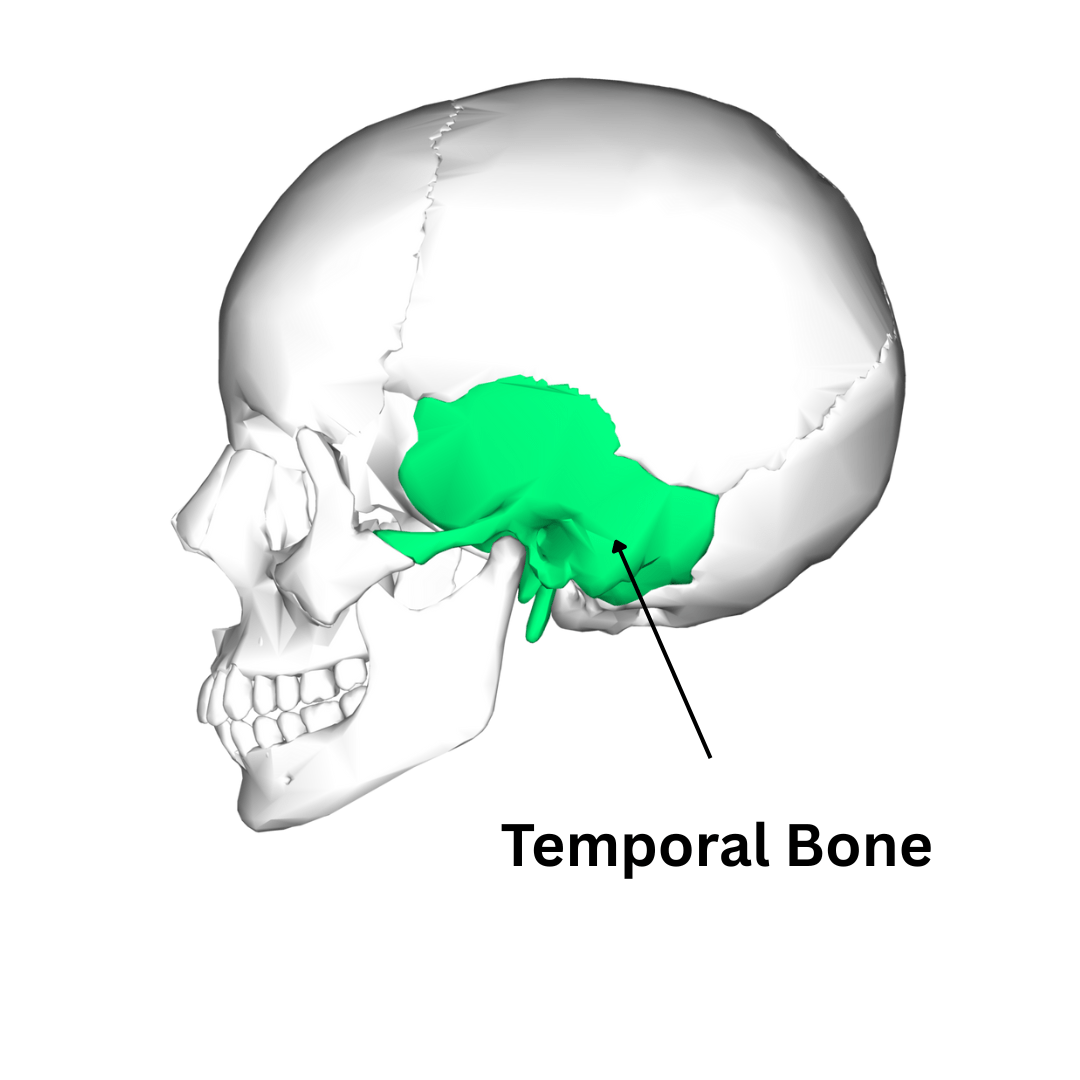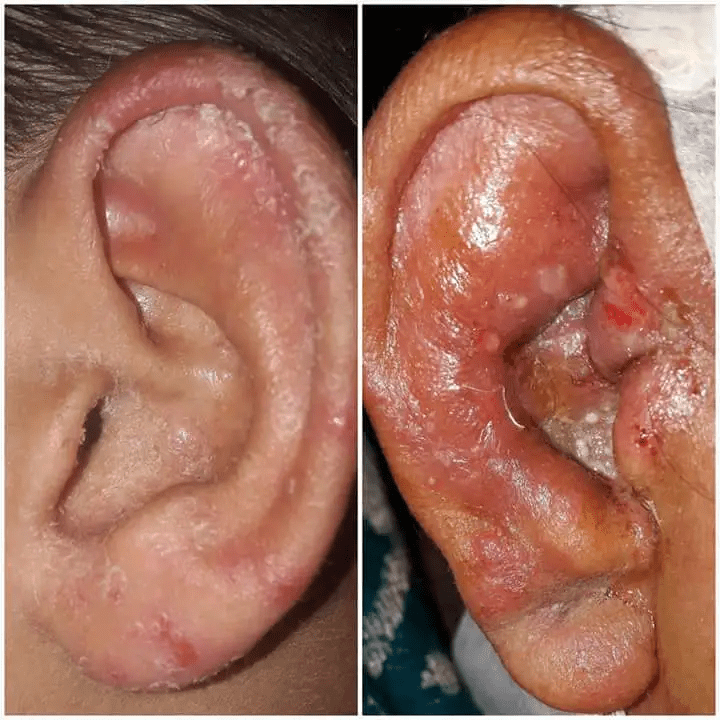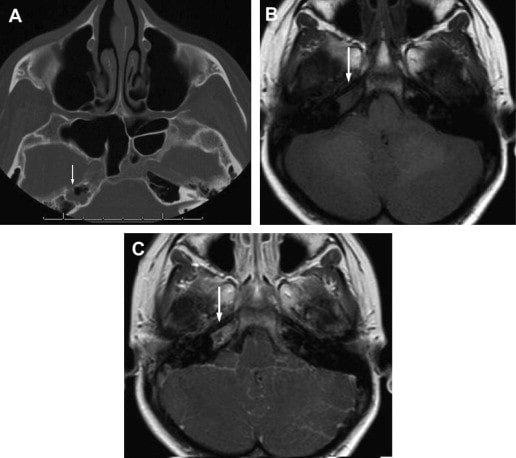Ear infections are common, especially in children, but when they go untreated or become chronic, they can lead to far more serious complications. One such condition is temporal bone infection, a rare but potentially life-threatening condition that affects the part of the skull that surrounds and protects vital ear structures.
In this blog, we’ll explore what temporal bone infection is, why it’s dangerous, how to recognise it, and what treatment options are available.
What is the Temporal Bone?
The temporal bone is a complex part of the skull located on both sides of the head near the ears. It houses essential components of the middle ear, inner ear, and parts of the auditory nerve. It plays an important role in our ability to hear, maintain balance, and protect the brain from external infections.
When this bone gets infected, it usually starts from an adjacent ear infection and can spread deeper if not treated promptly.
“यह संक्रमण धीरे-धीरे खतरनाक रूप ले सकता है, खासकर अगर समय पर इलाज नहीं किया गया।”
(This infection can gradually become dangerous, especially if not treated on time.)
Types of Temporal Bone Infections
There are several ways the temporal bone can become infected, most often due to complications from ear infections:
1. Mastoiditis
This is the most common form. It involves infection of the mastoid air cells, which are located just behind the ear. This typically follows an acute middle ear infection (otitis media) that was either untreated or inadequately treated.
Symptoms include:
- Swelling and redness behind the ear
- Persistent ear pain
- Fever
- Pus-like discharge from the ear
- Tenderness over the mastoid bone
2. Necrotising Otitis Externa
This is a severe and invasive infection, mostly seen in elderly diabetics or immunocompromised individuals. It starts in the external ear canal but can spread to the temporal bone and base of the skull.
Symptoms include:
- Severe, persistent ear pain
- Ear discharge
- Difficulty swallowing or speaking in advanced cases
- Cranial nerve involvement in extreme scenarios
“डायबिटीज़ या कमज़ोर इम्यून सिस्टम वाले लोगों में यह स्थिति ज्यादा गंभीर हो सकती है।”
(This condition can be more severe in people with diabetes or weak immune systems.)
3. Petrositis
A rarer form of temporal bone infection involving the petrous apex (a deep part of the temporal bone). It can lead to Gradenigo’s syndrome – a triad of symptoms:
- Deep-seated ear or facial pain
- Persistent ear discharge
- Paralysis of the sixth cranial nerve (causing double vision)
Why Temporal Bone Infections are Dangerous
These infections can spread beyond the ear and reach the brain, cranial nerves, or vascular system. If left untreated, complications can include:
- Meningitis (inflammation of the brain lining)
- Brain abscess
- Permanent hearing loss
- Facial paralysis
- Sepsis
“कभी-कभी साधारण सी लगने वाली कान की तकलीफ जानलेवा भी हो सकती है।”
(Sometimes, what seems like a simple ear problem can become life-threatening.)
How is it Diagnosed?
If a patient presents with chronic ear pain, swelling behind the ear, or signs of neurological involvement, a doctor may suspect a deeper infection.
Common diagnostic tools include:
- Otoscopy to examine the ear canal and eardrum
- CT scan or MRI to detect bone erosion or abscess
- Blood tests to assess infection severity
- Culture tests from ear discharge to identify the bacteria
Treatment Options
Management of temporal bone infection depends on its type and severity:
1. Antibiotics
Most cases require intravenous (IV) antibiotics, especially if there’s bone involvement. Oral antibiotics may be used for mild or recovering cases.
2. Surgery
If there’s an abscess, necrotic tissue, or chronic drainage, surgery may be required.
- Mastoidectomy is the most common surgical procedure performed to remove infected air cells in the mastoid part of the temporal bone.
- In some severe cases, surgical debridement of the external ear canal or skull base may be necessary.
3. Treating Underlying Conditions
For infections like necrotising otitis externa, controlling diabetes or boosting the immune system is a vital part of the treatment.
“इलाज के साथ-साथ, कारणों को पहचान कर उनका समाधान भी ज़रूरी होता है।”
(Along with treatment, identifying and addressing the causes is equally important.)
Prevention is Better than Cure
While temporal bone infections are uncommon, they are preventable if ear infections are treated seriously.
Here’s how you can reduce the risk:
- Never ignore persistent ear pain or discharge
- Always complete your antibiotic course
- Manage chronic conditions like diabetes well
- Avoid inserting objects into the ear
- Get regular ENT check-ups if you have a history of chronic ear infections
Temporal bone infections are a stark reminder that what begins as a minor ear infection can evolve into something far more dangerous. Early diagnosis, appropriate medical care, and regular monitoring can prevent serious outcomes.
“सही समय पर इलाज शुरू करना ही जीवन बचा सकता है।”
(Starting the right treatment at the right time can save a life.)
If you or a loved one experiences prolonged ear issues, especially accompanied by swelling, fever, or dizziness, don’t delay. Consult with the best ENT Surgeon in Nagpur without hesitation.




